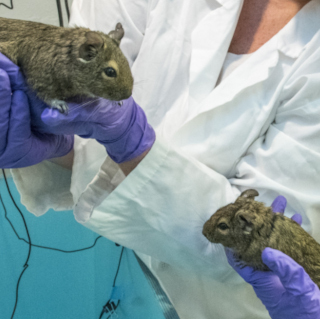Reporting Animal Injuries
Last Review Date: December 15, 2020
I. Purpose
When a LAR staff member (or another animal user) finds an animal with an injury or illness it is reported immediately to the Attending Veterinarian (AV), the Principal Investigator (PI), and, if necessary, the Facility Manager (FM). Notification of the AV or FM ensures that the animal obtains immediate medical treatment.
II. Responsibility
It is the LAR staff's responsibility to properly care for and report any injuries or illnesses that have occurred to animals housed within LAR.
III. Procedure
Upon finding an injured or ill animal, the animal technician must:
-
Ascertain the cause of the injury or illness, if possible
-
Provide supportive care if needed (heat support, moist or supplemental food on the cage bottom, etc)
-
Place a Vet Check card on the cage describing the number of affected animals (if the animals requiring attention are kept within a larger group), and the area/side of the body that is affected if applicable
-
Call the AV or Facility Manager and inform them of the problem and location of the animal
-
Once the AV has examined the animal and determined a course of treatment, this treatment should also be listed on the Vet Check card
-
Note the problem on the daily log sheet located on the animal room door
-
Inform the PI of any injury or illness to his/her animals
o If this is a common illness (described in the Identification & Treatment of
Common Illnesses SOP) noted in an experimental animal, contact the PI and
secure permission before initiating any treatments
o If the animal has sustained an injury due to fighting, note on the cage card
and whether it was moved to a separate cage
o If Ulcerative Dermatitis (UD) is present, fill out a UD treatment sheet (See
Ulcerative Dermatitis SOP)
o If the injury was caused by caging, etc., address and correct the problem
o Follow up with any specific treatment recommended by the AV or FM
